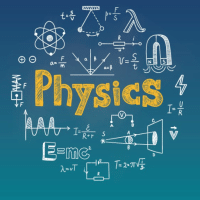Year 12 Exam > Year 12 Questions > When using the method of elimination by equat...
Start Learning for Free
When using the method of elimination by equating coefficients, what is primarily done to the original equations?
- a)Variables are substituted to simplify the equations
- b)The equations are added together
- c)One or both equations are multiplied to make coefficients equal
- d)They are graphed to find the intersection point
Correct answer is option 'C'. Can you explain this answer?
Most Upvoted Answer
When using the method of elimination by equating coefficients, what is...
In the method of elimination by equating coefficients, one or both equations are multiplied by necessary factors to make the coefficients of one variable equal. This allows for elimination through addition or subtraction of the equations, leading to a simpler equation to solve.

|
Explore Courses for Year 12 exam
|

|
Question Description
When using the method of elimination by equating coefficients, what is primarily done to the original equations?a) Variables are substituted to simplify the equationsb) The equations are added togetherc) One or both equations are multiplied to make coefficients equald) They are graphed to find the intersection pointCorrect answer is option 'C'. Can you explain this answer? for Year 12 2025 is part of Year 12 preparation. The Question and answers have been prepared according to the Year 12 exam syllabus. Information about When using the method of elimination by equating coefficients, what is primarily done to the original equations?a) Variables are substituted to simplify the equationsb) The equations are added togetherc) One or both equations are multiplied to make coefficients equald) They are graphed to find the intersection pointCorrect answer is option 'C'. Can you explain this answer? covers all topics & solutions for Year 12 2025 Exam. Find important definitions, questions, meanings, examples, exercises and tests below for When using the method of elimination by equating coefficients, what is primarily done to the original equations?a) Variables are substituted to simplify the equationsb) The equations are added togetherc) One or both equations are multiplied to make coefficients equald) They are graphed to find the intersection pointCorrect answer is option 'C'. Can you explain this answer?.
When using the method of elimination by equating coefficients, what is primarily done to the original equations?a) Variables are substituted to simplify the equationsb) The equations are added togetherc) One or both equations are multiplied to make coefficients equald) They are graphed to find the intersection pointCorrect answer is option 'C'. Can you explain this answer? for Year 12 2025 is part of Year 12 preparation. The Question and answers have been prepared according to the Year 12 exam syllabus. Information about When using the method of elimination by equating coefficients, what is primarily done to the original equations?a) Variables are substituted to simplify the equationsb) The equations are added togetherc) One or both equations are multiplied to make coefficients equald) They are graphed to find the intersection pointCorrect answer is option 'C'. Can you explain this answer? covers all topics & solutions for Year 12 2025 Exam. Find important definitions, questions, meanings, examples, exercises and tests below for When using the method of elimination by equating coefficients, what is primarily done to the original equations?a) Variables are substituted to simplify the equationsb) The equations are added togetherc) One or both equations are multiplied to make coefficients equald) They are graphed to find the intersection pointCorrect answer is option 'C'. Can you explain this answer?.
Solutions for When using the method of elimination by equating coefficients, what is primarily done to the original equations?a) Variables are substituted to simplify the equationsb) The equations are added togetherc) One or both equations are multiplied to make coefficients equald) They are graphed to find the intersection pointCorrect answer is option 'C'. Can you explain this answer? in English & in Hindi are available as part of our courses for Year 12.
Download more important topics, notes, lectures and mock test series for Year 12 Exam by signing up for free.
Here you can find the meaning of When using the method of elimination by equating coefficients, what is primarily done to the original equations?a) Variables are substituted to simplify the equationsb) The equations are added togetherc) One or both equations are multiplied to make coefficients equald) They are graphed to find the intersection pointCorrect answer is option 'C'. Can you explain this answer? defined & explained in the simplest way possible. Besides giving the explanation of
When using the method of elimination by equating coefficients, what is primarily done to the original equations?a) Variables are substituted to simplify the equationsb) The equations are added togetherc) One or both equations are multiplied to make coefficients equald) They are graphed to find the intersection pointCorrect answer is option 'C'. Can you explain this answer?, a detailed solution for When using the method of elimination by equating coefficients, what is primarily done to the original equations?a) Variables are substituted to simplify the equationsb) The equations are added togetherc) One or both equations are multiplied to make coefficients equald) They are graphed to find the intersection pointCorrect answer is option 'C'. Can you explain this answer? has been provided alongside types of When using the method of elimination by equating coefficients, what is primarily done to the original equations?a) Variables are substituted to simplify the equationsb) The equations are added togetherc) One or both equations are multiplied to make coefficients equald) They are graphed to find the intersection pointCorrect answer is option 'C'. Can you explain this answer? theory, EduRev gives you an
ample number of questions to practice When using the method of elimination by equating coefficients, what is primarily done to the original equations?a) Variables are substituted to simplify the equationsb) The equations are added togetherc) One or both equations are multiplied to make coefficients equald) They are graphed to find the intersection pointCorrect answer is option 'C'. Can you explain this answer? tests, examples and also practice Year 12 tests.

|
Explore Courses for Year 12 exam
|

|
Signup for Free!
Signup to see your scores go up within 7 days! Learn & Practice with 1000+ FREE Notes, Videos & Tests.























